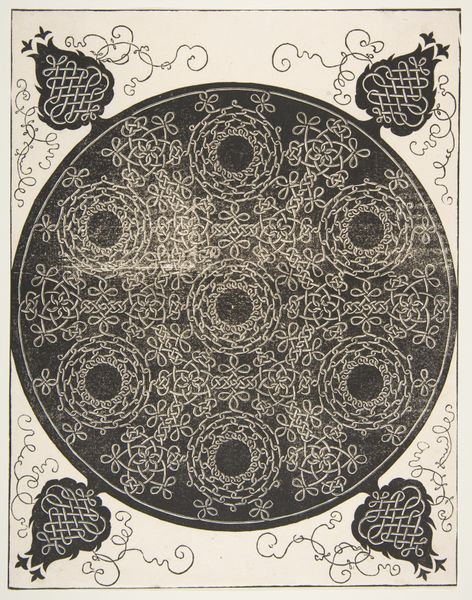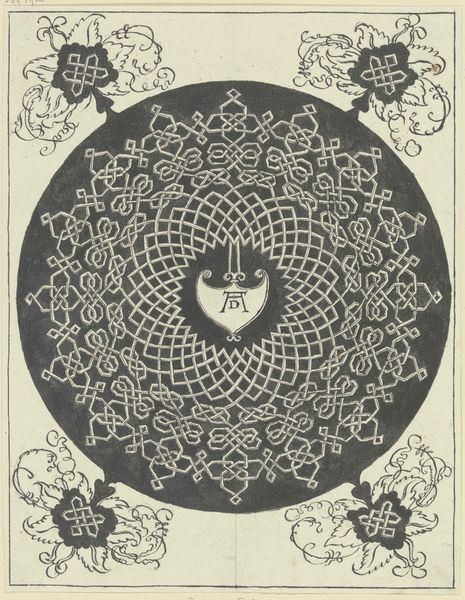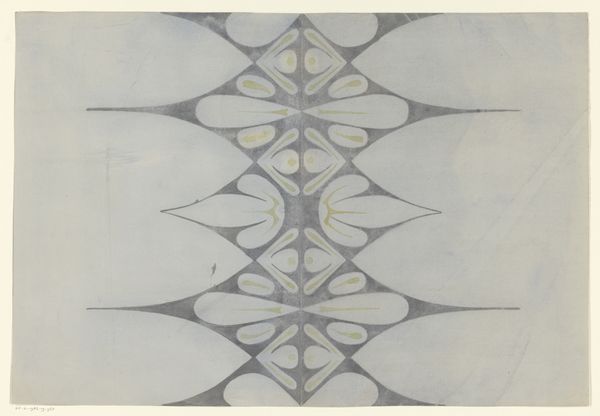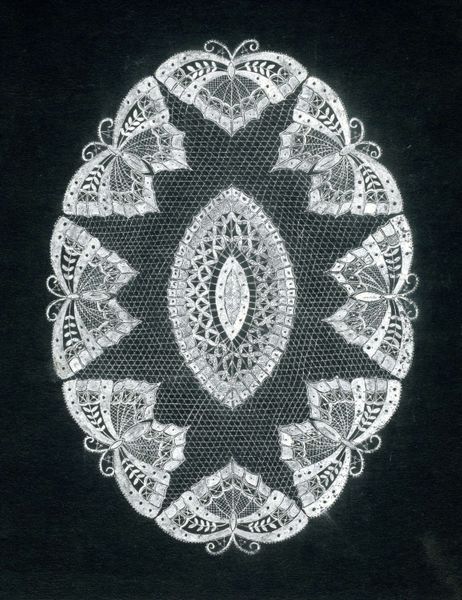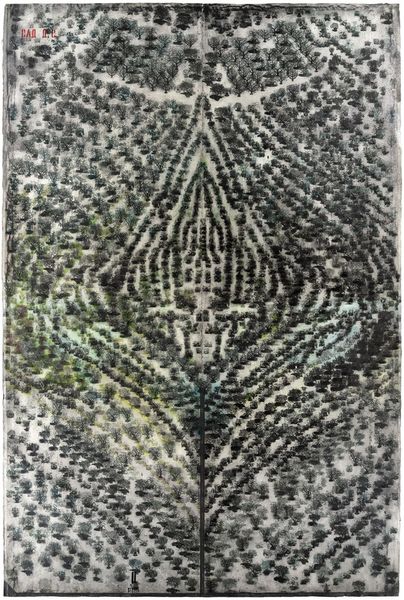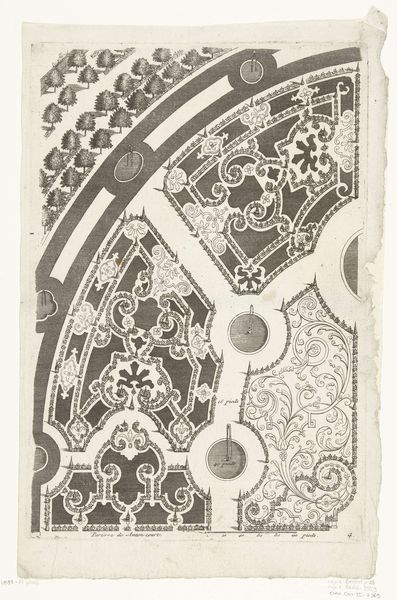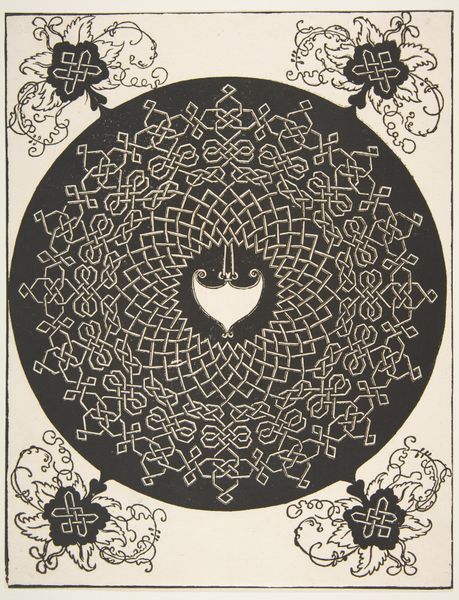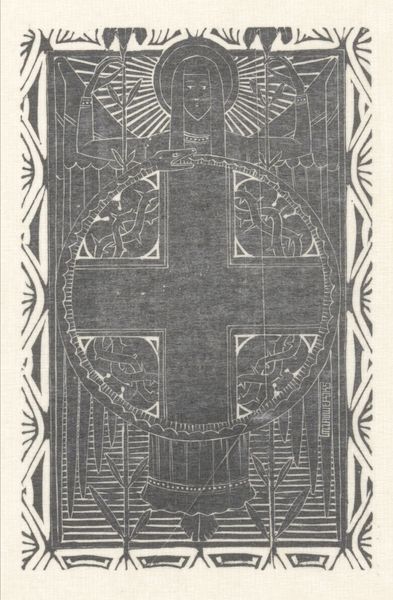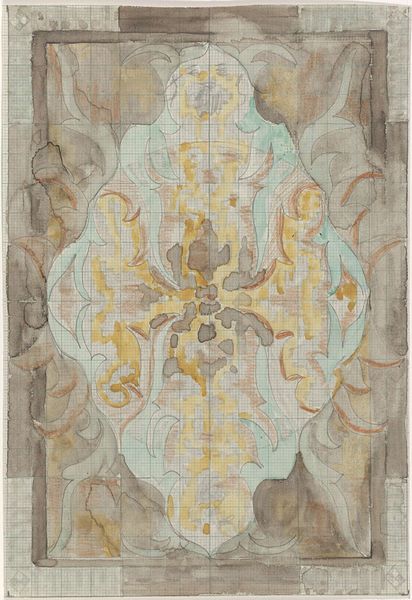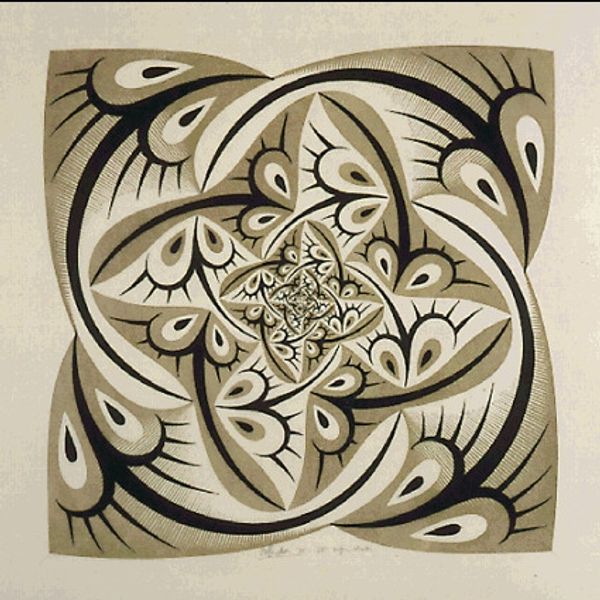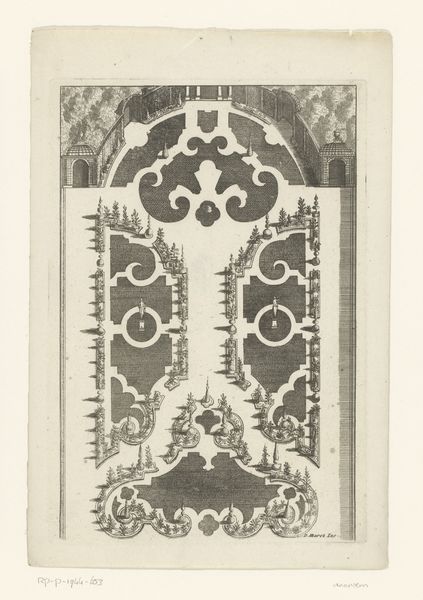
drawing, print, engraving
#
drawing
#
decorative element
# print
#
11_renaissance
#
geometric
#
line
#
islamic-art
#
history-painting
#
engraving
Dimensions: 113 mm (height) x 80 mm (width) (plademaal)
Curator: Here we have Melchior Lorck's "Oval Arabesque" from 1561, a fascinating example of Renaissance engraving now held at the Statens Museum for Kunst. Editor: My first thought is how intricate the pattern is. The density of the line work makes me wonder how long it took to create the printing plate. And what metal did he use, I wonder, to withstand all that precise carving? Curator: Well, it's more than mere decoration. The arabesque form itself, stemming from Islamic art, carries a profound cultural memory. Look at how it intertwines with the text circling the border – that fusion speaks of cross-cultural exchange and artistic appropriation. Editor: Appropriation, exactly. We need to consider the context. Printmaking allowed this imagery to circulate. Who was buying these prints, and how did they understand this blend of styles? Was it merely exotic, or did it provoke a deeper engagement with non-European aesthetics? Curator: Perhaps both? Ornament was highly symbolic then, loaded with meaning for those familiar with iconographic languages. Each curve and flourish contributes to a larger harmony, hinting at cosmic order and divine beauty. Editor: But let's not forget the physical act of production. Consider the labor invested in each tiny cut, the skill required to maintain consistent pressure, and the eventual wear and tear on the plate itself. These details offer an important insight into the economic realities behind art making in the 16th century. Curator: It's certainly true the dissemination depended on material means. What the symbolism reveals, I believe, is humanity's timeless desire for connection – expressed through patterns of infinite complexity and a recognition of the shared foundations of cultures separated by distance and belief. Editor: True, tracing back how that "desire" fueled workshops, trade, and changing aesthetics, can lead us beyond traditional art history. This simple engraving reflects complicated entanglements between artistry, labour and culture. Curator: An unexpectedly potent symbol, when seen through a wide lens, indeed. Editor: Absolutely. Thanks to both symbol and skilled execution, the piece creates a beautiful and intriguing perspective.
Comments
No comments
Be the first to comment and join the conversation on the ultimate creative platform.
